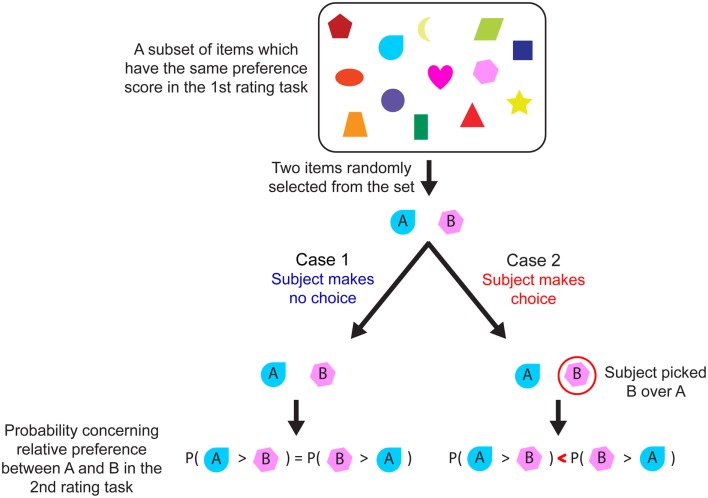Figure 1.
Schematic illustration of the methodological flaw in the free-choice paradigm. Each object in the box represents an item (e.g., music CD). If two items (A and B) were randomly selected from the set, and a participant made no choice (Case 1), the only information available about participant’s preference for items A and B is that both had the same ratings in the first rating task, and thus we cannot predict which item would be rated higher during the second rating task. In contrast (Case 2), the participant’s choice provides additional information about his/her relative preference between the two items. Thus, if a participant selected B over A, item B (chosen item) is likely to be rated higher than item A (rejected item) during the second rating task (i.e., a spread of alternatives is more likely to be observed).

